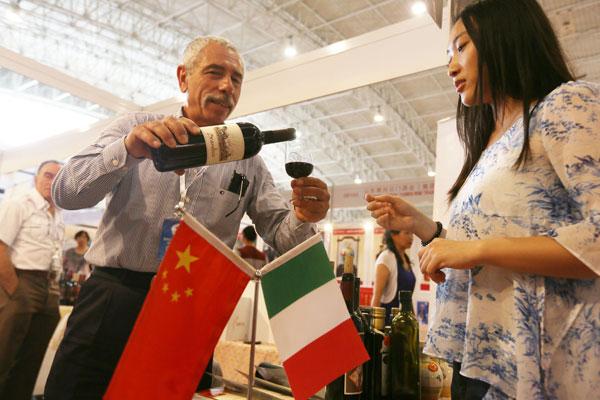MILAN, Jul 24 (Class Editori) - China presence in Italian exports is still limited. The second economy in the world collects about 12% of world imports, anyway, as shown in the latest ICE report, for Italian exports it represents only 3%. President Carlo Maria Ferro intends to fill the gap. In fact Italy ranks 4th among the European trading partners of China and 24th worldwide.
“There is therefore a wide scope for improvement,” as shown in the latest ICE report and the Istat-Ice Yearbook, presented yesterday in Naples in the presence of Deputy Prime Minister Luigi Di Maio, Undersecretary for Economic Development Michele Geraci, and the President of the Gian Carlo Blangiardo Institute of Statistics.
“We see large room for collaborations in machinery, fashion, agribusiness and e-commerce with China, in third countries of Africa and Southeast Asia,” as reported in the document. The presentation was preceded by the controversy between President Ferro and the editorial committee on the positions regarding the European Commission.
The audience of entrepreneurs, however, appreciated the document. Over the last ten years, Italian exports have grown by 16.9% overall. The United States, France and Germany are the main outlets for Made in Italy, while Switzerland and the Netherlands are among the most dynamic countries in 2018 together with the USA. In the past year exports have increased by 1.9%, while imports have registered a +2.3%. The upward trend was confirmed also in the first months of 2019 with an estimated +4%. Exporting firms, on the other hand, fell to around 125,000. Conversely, the average value of exports grew and the share of sales produced by medium and large companies has grown.
E-commerce is also growing, although the weight of the total business-to-consumer segment is still 7% for a value of about 10.3 billion. While between companies the figure is 132 billion, +1.5% compared to the previous year, driven by the automotive sector. Digitization, sustainability and young people are therefore the challenges set by Ferro to increase market shares. “These three paradigms meet the needs of the modern consumer, especially of millennials and the Z generation. And they also meet the needs of businesses, in particular of start-ups and SMEs, especially in Southern Italy, which must make the leap from occasional exporters to systematic exporters,” explained Ferro. (All rights reserved)
(Source:Class Editori)
Notice: No person, organization and/or company shall disseminate or broadcast the above article on Xinhua Silk Road website without prior permission by Xinhua Silk Road.




 A single purchase
A single purchase









